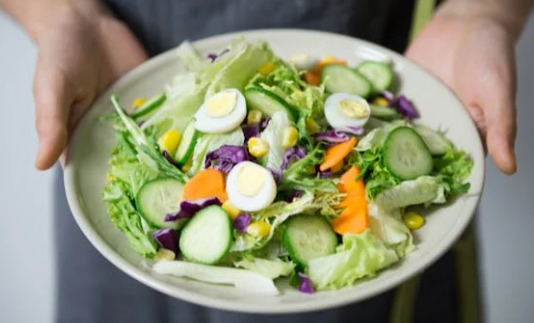
In an era where nearly everything we do leaves a digital trace, even dinner has become data. From late-night food delivery orders to meticulously styled Instagram plates, our culinary habits are being observed, analyzed, and, increasingly, monetized. What we eat is no longer just a personal preference or cultural expression—it’s a behavioral signal.
The platforms we use to order, share, or review food are collecting vast troves of information. What cuisine you choose, when you eat, how often you order out, your alcohol consumption, your food intolerances—it all feeds into a growing data ecosystem. Food, once ephemeral, is now a metric.
The Digital Trail of Taste
Every tap on a food delivery app, every recipe saved on Pinterest, every TikTok food trend you engage with—it all gets stored. And together, these habits form a profile more detailed than you might expect.
Ordering Thai takeout every Thursday at 8 p.m. while watching Netflix? Your delivery app knows. Following 12 plant-based chefs on Instagram while frequently “liking” dessert content? Social algorithms take note. Consistently skipping breakfast but binge-snacking at midnight? That’s behavioral data, and it’s tracked.
Even smart kitchen appliances—from Wi-Fi-enabled coffee makers to fridges that recommend groceries—contribute to a larger picture of who you are, what you consume, and how.

What the Data Reveals
To a machine, your food preferences can be translated into risk assessments, targeted ads, and predictive behavior models. You may see it as ordering pizza. An algorithm may see it as a stress response, a pattern, or even a demographic flag.
Companies use food data for:
- Targeted advertising: If you’re ordering vegan meals and protein shakes, expect to see ads for supplements or wellness products.
- Health profiling: Insurance companies and fitness platforms can infer health trends from food-related data—raising concerns about risk-based profiling.
- Economic forecasting: Surge in ramen deliveries? That might signal shifts in economic comfort.
- Political and cultural segmentation: Believe it or not, food can correlate with voting patterns. People who frequent local farmers markets may statistically lean one way; fast food fans, another.
These correlations aren’t inherently malicious—but they do raise questions about consent, accuracy, and control.
From Private Preference to Public Signal
Social media has added another layer to the equation. What we post about food isn’t just a record—it’s a performance. A breakfast smoothie bowl isn’t just fuel; it’s a statement. A steak dinner might signal status. A chaotic snack plate could be relatable content.
Our food personas—consciously curated or not—often influence how others perceive us. That’s not necessarily new (humans have always gathered over meals and judged food choices), but the digital permanence and scalability are.
Moreover, when we share meals, we’re not just offering insight into what we eat—we’re offering platforms more data about where we are, who we’re with, and what brands are in our orbit.
Algorithmic Appetite: How AI Shapes What You Crave
It’s not just that your data reflects your food preferences—your data can shape them.
Algorithms are increasingly adept at nudging culinary choices. Ever notice how a single click on a dumpling video spirals into a week-long feed of Asian street food? Or how meal kits pop up after you mention “dinner ideas” in a message?
The digital ecosystem doesn’t just listen—it speaks. Platforms optimize your feed based on engagement, creating a subtle feedback loop that amplifies your tastes—or steers them elsewhere.
In the same way that recommendation engines suggest music or movies, they’re starting to suggest what you eat. Except in this case, it’s not just entertainment—it’s what you put into your body.
Who Benefits, and at What Cost?
For platforms and advertisers, food data is incredibly lucrative. It’s personal, habitual, and often linked to emotion—making it a powerful vehicle for marketing. The more companies understand your food behavior, the better they can predict what you’ll buy, what price you’re willing to pay, and when.
For users, the benefits are mixed. Sure, it’s convenient to have meal suggestions, tailored grocery lists, or reminders about your usual lunch spot. But the trade-off is often privacy, autonomy, and even identity. When your food choices become a product in themselves, the intimacy of eating gets diluted.
Food and Digital Ethics
At the heart of the issue is consent. Few people realize how much data is collected from seemingly harmless actions like ordering sushi or rating a restaurant. Even fewer understand where that data ends up—or how it’s interpreted.
There’s also the question of bias. If algorithms are trained on certain types of users, they may begin recommending culturally narrow or unhealthy choices to others, reinforcing stereotypes rather than expanding palates.
And what happens when AI begins to influence food access itself? If grocery apps prioritize high-margin items or restrict lower-cost foods to certain ZIP codes, food equity becomes a digital issue as much as a social one.
Reclaiming the Plate
So how do we eat with agency in a world where dinner is data?
It starts with awareness. Knowing that your choices are being tracked—often without explicit consent—can help you decide where and how to engage. Opting out of certain apps, turning off personalized ads, or choosing analog moments—like cooking from a handwritten recipe or dining without a phone—can all help restore some boundaries.
There’s also room to push for greater transparency. Just as we demand nutrition labels on food, maybe it’s time for clearer “data labels” on digital services—what’s collected, who’s using it, and how long it’s stored.
Because ultimately, eating is more than consumption. It’s culture, comfort, memory, and joy. And while data might capture what’s on your plate, it can’t capture why it matters—unless we let it.






